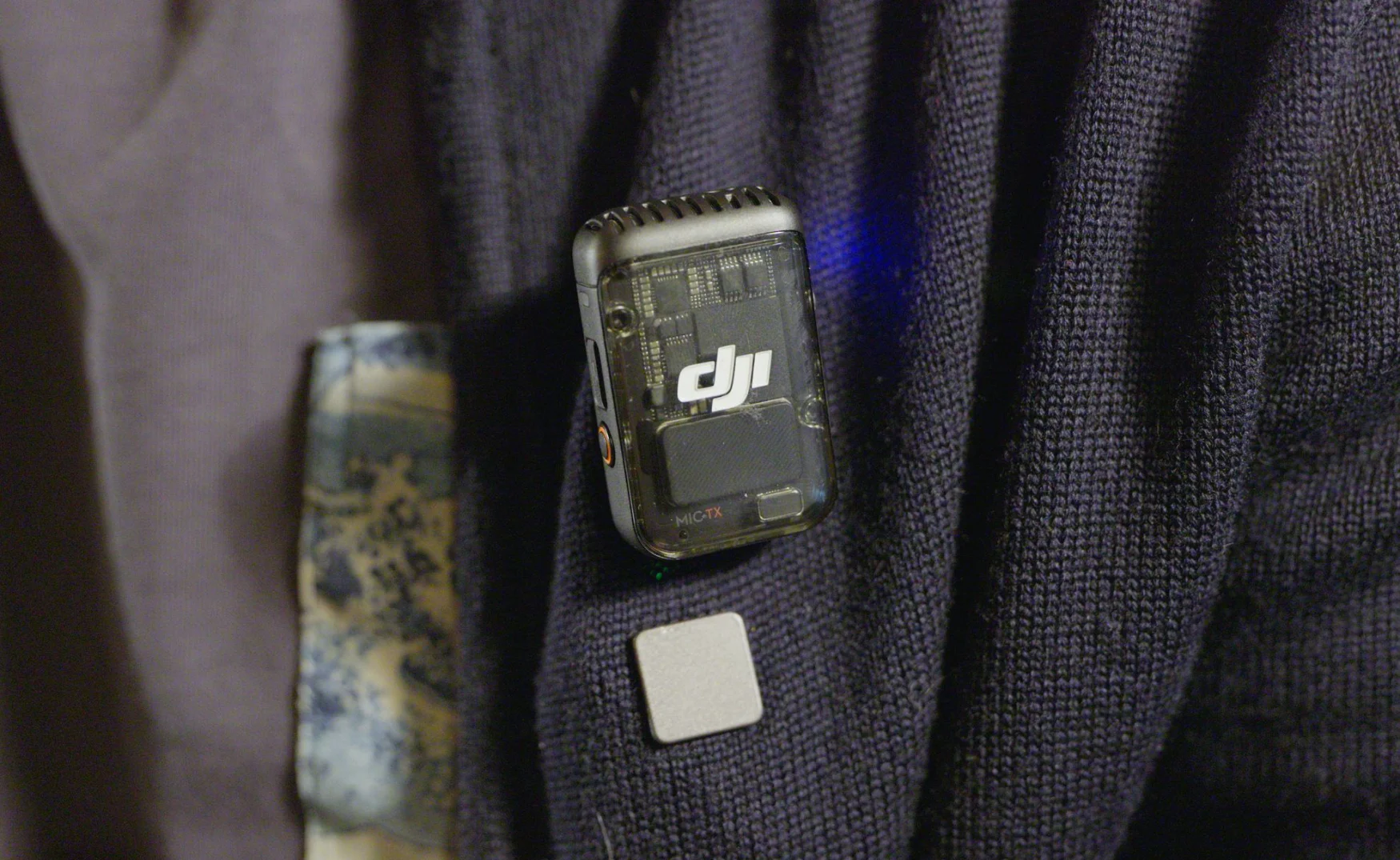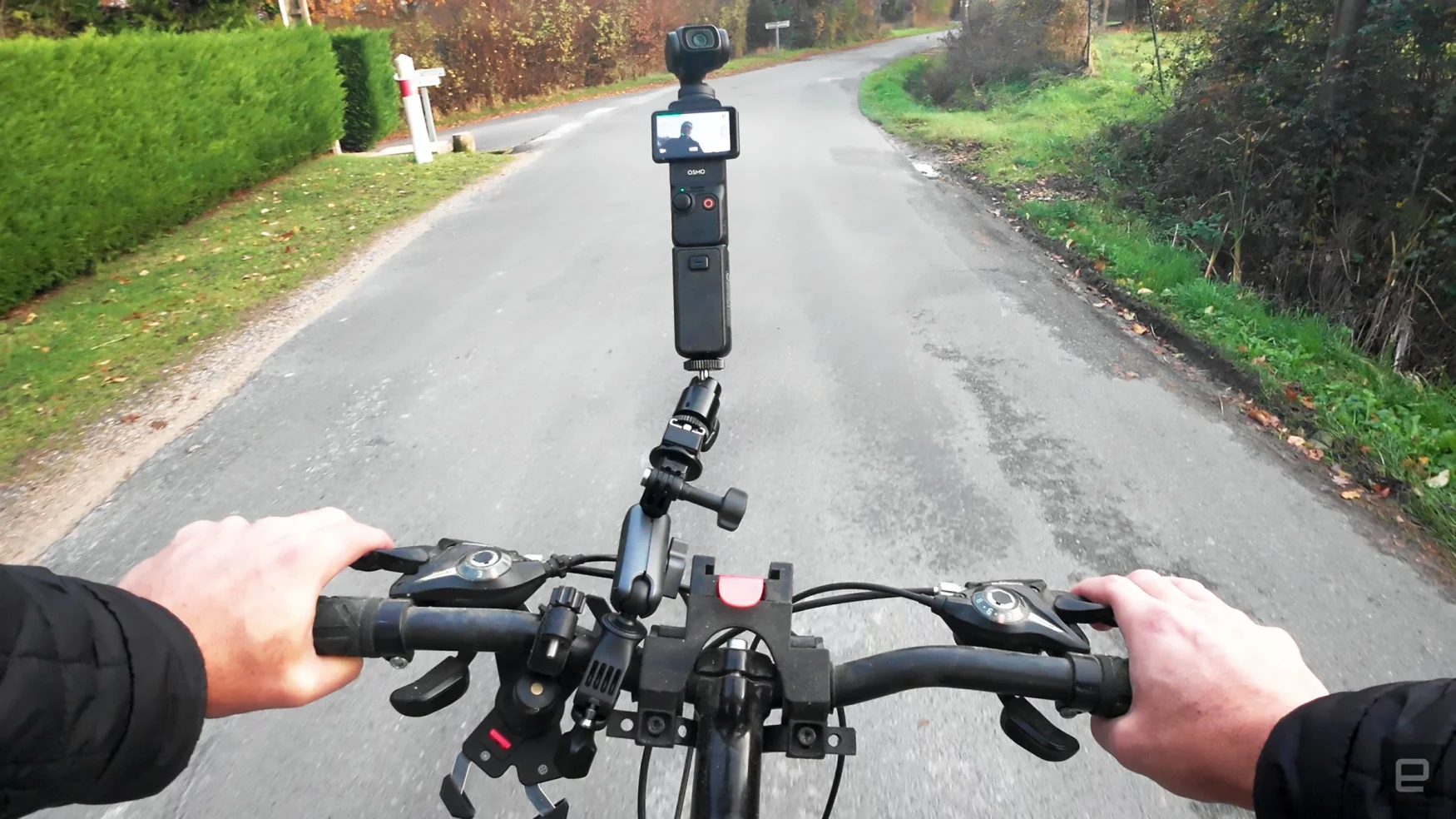As one of the few standalone gimbal cameras out there, DJI’s Osmo Pocket line has always been something of a niche product family. But it certainly had its fans, offering things like portability, fluid video and decent image quality. Now, three years after the Pocket 2, DJI has introduced the Osmo Pocket 3 with some big improvements. Those include a large 1-inch sensor that improves image quality significantly, especially in low light. Another key change is a bigger screen that flips sideways, plus advanced subject tracking. Other features include 4K 120p shooting, 10-bit D-LogM for improved dynamic range, quicker autofocus and more.
With all those extra talents, the Pocket 3 could serve as a standalone vlogging camera – but it’s also considerably more expensive than its predecessor. To find out if it’s worth the extra money, I did some extensive testing to see what it could — and couldn’t — do.
Pros
- Big 1-inch sensor
- Better in low light
- 10-bit Log
- Big swiveling touchscreen
- Long battery life
Cons
- Expensive
- Not great for photos
DJI’s Osmo Pocket 3 is a portable camera that’s relatively simple to use, small enough to carry with you and easy to maneuver in tight spaces. It’s stabilized by a 3-axis gimbal to make shots smooth and fluid. It can pan, tilt and roll across a wide range of 303, 278 and 283 degrees, respectively.
At 5.5 inches long and 179 grams, it’s a bit heavier but nearly as compact as the Pocket 2 (117 grams and 4.9 inches long). It resembles its predecessor at first glance, but a closer look reveals some big changes.
The first thing that jumps out is the 16:9 2-inch screen that has nearly five times the area of the Pocket 2’s 1-inch display. Better still, it flips sideways and automatically rotates the camera to match, so you can shoot either in landscape or portrait modes with no need to dive into settings. However, note that going into vertical video mode doesn’t flip the camera like it does on DJI’s Mini 4 Pro drone. Rather, it just crops the video, reducing the resolution from 4K to 3K.
I wouldn’t call the menu system on the Pocket 3’s touchscreen intuitive, as it involves either swiping from the sides or touching icons to access functions. Without a lot of visual clues for guidance, you need to memorize all the functions.
The other noticeable feature is a larger camera head that houses a 1-inch 9.4MP sensor with a true 16mm diagonal size. That’s nearly three times that of the Pocket 2’s 1/1.7-inch sensor. Knowing DJI, we might see the same sensor on upcoming products like the Mini drones and Osmo action cams.
Gallery: DJI Osmo Pocket 3 review image gallery | 15 Photos
Gallery: DJI Osmo Pocket 3 review image gallery | 15 Photos
The fixed 20mm equivalent lens has a relatively fast F/2.0 aperture. The wide focal length means it’s not ideal for portraits or product shots. It does have a two times digital zoom to double that, at a cost of some resolution.
There are now only two physical buttons, record and gimbal control. The microSD card is still on the left side, with USB-C port on the button as before. Should the position of the latter be inconvenient, the included handle moves it to the side.
Battery life is outstanding for such a small device, with 135 minutes available with the built-in 1,300mAh battery, rising to 240 minutes with the optional ($99) 950mAh battery handle. On top of that, the Pocket 3 can be recharged from 20 to 80 percent in just 16 minutes, so DJI is finally embracing fast charging on its devices – something that’d be nice to see with its drones, too.

Steve Dent for Engadget
What about the Mimo app? While its use was required previously for some functions on the Pocket 2, most things can now be done straight from the camera screen, apart from Glamor and a few other settings. It’s still handy for monitoring and controlling the camera remotely, of course.
The Pocket 3 is available by itself or in a Creator Combo that gives you a battery handle, mini tripod, 0.75x lens adapter and carry bag. You also get the DJI Mic 2 Transmitter that pairs automatically with the Pocket 3, giving you a high-quality wireless mic and providing an audio backup. DJI should be announcing the Mic 2 as a separate product in the near future. If you already own the original DJI Mic, the Osmo Pocket 3 is compatible with that model as well.
Performance
Above all, the Osmo Pocket 3 is a gimbal designed to provide smooth and stable video. Operation is very much point and shoot to keep the subject in frame, as the gimbal and autofocus do the rest. As before, it offers three modes: follow, tilt lock and FPV mode.
Follow aims the camera where you point it while locking off roll to keep the camera level. Tilt mode also locks the tilt function to keep the horizon level, while FPV keeps all three unlocked so that the camera tilts, pans and rolls as you move the camera.
It’s not just the larger sensor that helps the Pocket 3 create cinematic video. The optical stabilization allows for slower shutter speeds that create natural looking motion blur — something that’s impossible on action cameras, as electronic stabilization isn’t compatible with motion blur.

Steve Dent for Engadget
The gimbal generally does a good job of smoothing video, in scenarios ranging from cars, to running to rapid panning. Without electronic stabilization, Z-axis (up and down) motion is still present, so you’ll need to walk smoothly to avoid it.
The Pocket 3 and DJI Mic 2 is a practical combination, allowing you to vlog easily with smooth, high-quality video and excellent audio quality. It’s also discreet, as the Pocket 3 is small and the Mic 2 allows you to speak quietly, even in a crowd.
As with DJI’s original Mic, the Mic 2 offers consistent sound quality and levels while keeping outside noise to a minimum. It has decent range with the Pocket 3, though DJI has yet to specify that exactly (again, we’ll learn more when the standalone Mic 2 is released). Given the wide angle lens, you’ll probably never get too far from the Pocket 3 – but it worked fine for me with a camera mounted on a car and me inside, for example.
Like DJI’s drones, the Pocket 3 has ActiveTrack subject tracking. You enable that by double tapping a subject or selecting it from the Mimo app. From there, the head will tilt and pan to follow the subject and keep it in focus.

Steve Dent for Engadget
This function works automatically when selfie mode is activated either by touching the icon or triple-pressing the joystick. In this case, it goes into face-tracking mode and keeps your face centered screen no matter where you move the camera.
Another function called dynamic framing also tracks faces, but lets you change the framing at the touch of a button. DJI also introduced a new mode called spin shot that rotates the camera 90 or 180 degrees to create a stylized scene.
Video and image quality
The Pocket 3 can shoot 4K at up to 60 fps in normal mode, and now includes both a 10-bit D-LogM mode and HLG mode for HDR shooting. It has a 9.
DJI also added 4K 120p shooting via a special slow-mo mode. This is handy for high-speed scenarios, particularly when combined with camera moves. At launch, this mode didn’t support 10-bit and D-LogM/HLG modes, but via a recent firmware update, those modes now work at 4K 120p as well.
Another new function is low-light video mode, designed to improve performance in dim scenes. In this setting, it’s limited to 30 fps max and ISO is boosted up to 16,000, compared to 3,200 in regular video mode.
The Hyperlapse and time lapse settings work the same as on DJI drones, giving you a time lapse option that’s great for showing the quick passage of time. The other two modes are Panorama for wide shots and, of course, photos.
Credit: Source link